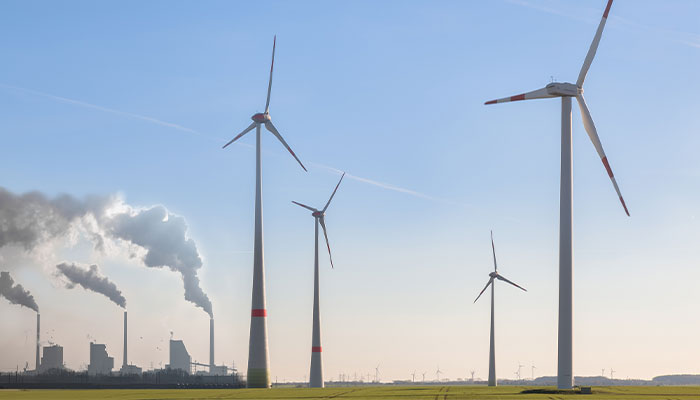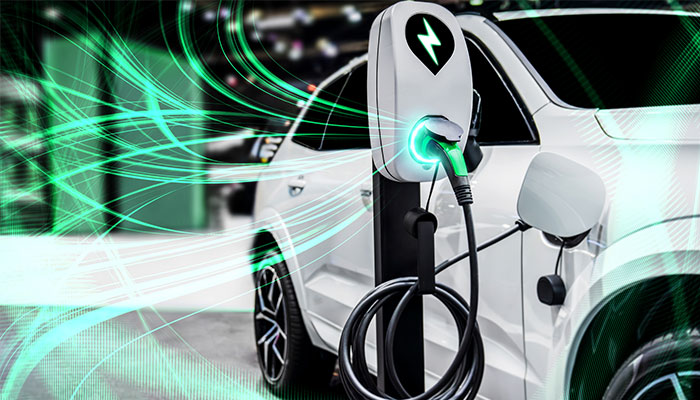Dr Marjan Nazifi, a lecturer in the Department of Economics at Macquarie Business School, studies carbon pricing mechanisms and the role played by renewables in decreasing emission intensity in the power sector. Here she looks at the remarkable transition under way in the Australian electricity sector.
The state of play
Australia has introduced various policies to increase the cost of fossil fuel-generated electricity and to improve price competitiveness in the more expensive, low-carbon technologies, says Nazifi. These include the Renewable Energy Target scheme (launched in 1999 and amended several times since), a Carbon Pricing Mechanism (2012-2014), Direct Action (launched 2014), and the Emission Reduction Fund more recently.

Fuel for thought: Analyses suggest wind and solar will soon be cheaper than coal, even without imposing a tax on carbon.
Despite these policies, recent studies indicate there is still a place for coal, at least economically. This is largely due to its ‘sunk capital costs’ – meaning the cost of establishing generators has already been met – and its dispatchability. But Nazifi believes the balance could be shifting.
“According to studies conducted in 2018 and 2019 by CSIRO, AEMO (the Australian Energy Market Operator) and clean energy research firm BloombergNEF, it seems that existing coal-fired plants are still competitive and remain the lowest-cost way of generating electricity within the National Electricity Market," Nazifi says.
For a country so rich in natural resources – both fossil fuels and renewables – Australia has some of the highest power prices in the world.
“However, some analyses (notably one from BloombergNEF) predict that generating electricity through new wind and solar farms will soon be cheaper than coal, even without imposing a tax on carbon. The reasons for this include a higher share of investment in renewables, the continued fall in the cost of wind and solar technologies and the higher international price for black coal."
Nazifi says there are other costs that should be considered but these are more fluid and harder to define. For example, many applied cost measures such as the leveled cost of energy for electricity generation do not consider the uncertainty associated with renewable sources to generate electricity. They ignore the difference in value between dispatchable and intermittent generation.
“In other words, they fail to deal with variability and intermittency. There are wider system costs that need to be taken into consideration if we want to know whether fossil fuels or renewables are cheaper,” says Narzifi
"For instance, the cost of energy storage technologies for wind and solar, which are required to smooth out the intermittency of renewable energy sources, should be included in any comparison. We should also take the higher environmental cost of fossil fuel combustion into consideration.”
Why is electricity so expensive in Australia?
For a country so rich in natural resources – both fossil fuels and renewables – Australia has some of the highest power prices in the world. According to Nazifi, the reasons for this are many and varied and include the very high carbon pass-through rates from retailers to consumers during the implementation of the carbon pricing mechanism.
Nazifi and Macquarie Business School colleagues Stefan Trueck and Liangxu Zhu studied the impact of these pass-through rates and found variances across the states.
Australia’s carbon emissions account for 58.4 percent of national energy-related carbon emissions, compared with just 49.4 percent internationally.
“When Carbon Pricing Mechanisms were introduced across the National Electricity Market (in particular the 2012-14 Carbon Tax), these pass-through rates contributed to very high wholesale electricity prices. And interestingly, our findings show that following the repeal of the Carbon Tax, electricity prices did not revert to their pre-tax levels,” says Nazifi.
The oft-cited closure of coal-fired power generators has also contributed to higher prices, but so have increased demand, unplanned outages and the weather.
- Why is it so hard for so many Americans to vote?
- Aged care: an industry in crisis with plenty of blame to go around
“Black coal generators are producing more power following the closure of several brown coal plants in 2016 and 2017. This has forced operators to source more fuel at spot market prices, which have risen sharply. The increase in the cost of coal generation is one of the most important factors driving up power prices.
“In addition to rises in the prices of coal, wholesale gas and oil, there are several other factors at play. These include an increase in demand (particularly in Victoria and South Australia, where the average spot wholesale electricity prices in 2018 were the highest on record), a series of unplanned thermal unit outages and unfavourable weather conditions resulting in reduced output from renewables, such as lower wind output and lower output from hydro generators because of dry conditions,” says Nazifi.
The future of coal
Coal seems set to remain a significant contributor to Australia’s energy generation mix for many years to come but renewables are on the rise.

Change horizon: Electricity generation in Australia is still dominated by coal-fired plants, but the large increase in renewable output brought emissions to a record low in the first quarter of 2019.
“The future of coal-fired plants depends on factors such as the price of coal, the cost of renewable sources, the availability of low-carbon technologies, future climate change policies and the political certainty associated with the implementation of these policies.
“Electricity generation in Australia is still dominated by coal-fired power stations due to their cheap availability and the nature of long-term contracts between coal miners and power plants.
“The trend towards renewables is a result of the need to reduce the significant carbon emissions from electricity generation. According to 2014 International Energy Agency figures, Australia’s carbon emissions account for 58.4 percent of national energy-related carbon emissions, compared with just 49.4 percent internationally,” says Nazifi.
Are Australia’s emissions falling?
Nazifi says there is some good news here but any significant future gains could depend on longer-term – and bipartisan – government policy.
“Over the past few years, Australia has experienced a significant fall in average emission intensity from the power sector of around 5.5 per cent, which can be predominately attributed to the increased deployment of renewables.
“The large increase in renewable output, coupled with reduced coal-fired generation, resulted in the first quarter of 2019 recording the lowest quarterly average emissions intensity on record.
“The Carbon Tax had only a temporary effect on emission intensities. One reason for this may be that the market did not expect the scheme to remain in place over relevant investment horizons. A key implication for environmental policy-makers is that any future carbon pricing mechanism (or other potential climate change policies or strategies) should have a long-term framework.”
Dr Marjan Nazifi is a Lecturer in the Department of Economics at Macquarie Business School.



